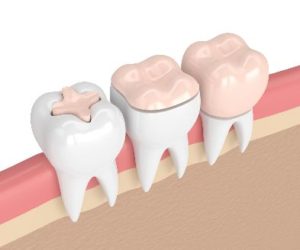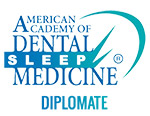 This might sound like something that only a dentist would say, but we’ll say it anyway: Teeth are amazing! Enamel is the hardest substance in the body and can last an unbelievably long time – so long, in fact, that anthropologists find intact teeth from thousands of years ago that still give them information about the diet and lifestyle of the people living in that age.
This might sound like something that only a dentist would say, but we’ll say it anyway: Teeth are amazing! Enamel is the hardest substance in the body and can last an unbelievably long time – so long, in fact, that anthropologists find intact teeth from thousands of years ago that still give them information about the diet and lifestyle of the people living in that age.
Since natural teeth are so strong, it goes without saying that one of the most important goals when restoring a tooth is to save as much of it as possible. If you’ve got a damaged tooth with a large cavity or fracture in it, your cosmetic dentist in State College may recommend either a crown, onlay or inlay. One of the main differences between these options is the amount of natural tooth that’s conserved. Learn more about these treatment options in this blog!
What Is the Purpose of a Dental Restoration?
When a tooth is fully intact it’s incredibly strong. However, if it develops a large cavity or a fracture, it’s no longer strong enough to reliably function without breaking. The chewing forces that teeth are subjected to every day are incredibly high.
Sometimes the damage to a tooth is relatively small and can be fixed with a simple filling. But when the damage is more extensive a heavy-duty treatment is necessary to restore the tooth’s strength.
Three options are an inlay, onlay, or crown.
What’s the Difference Between an Inlay, Onlay and Crown?
Here we’ll briefly describe each of these treatments:
- Inlay – Similar to a filling but made of a stronger material. Inlays are used instead of a filling when a tooth has a particularly large cavity and has subsequently had a lot of its structure removed. This option conserves the most amount of tooth structure.
- Onlay – Sometimes called a three-quarter crown, this restoration covers the cusps, or four corners, of a back tooth but doesn’t extend all the way to the gumline.
- Crown – Also referred to as a “cap,” this restoration covers the entire tooth. This option is generally used when a tooth is severely damaged and conserves the least amount of tooth structure.
All three options can be made with materials such porcelain, gold, or zirconia, which are all very strong. These materials can withstand strong chewing forces and therefore last for many years.
Which One Is Right For You?
If you suspect that you have a cavity or fracture, the first step is to schedule an appointment with your cosmetic dentist in State College. They can assess your situation and recommend the appropriate treatment.
Now that you know a bit more about these treatments, you’ll be able to ask the right questions and make the informed choice that’s best for you!
About the Author
Dr. Donald Marks and Dr. John Martin provide general, cosmetic and periodontal services in their practice. They know the importance of conservative treatment and always strive to do minimally invasive procedures. If you think you might have a cavity or fracture and have any questions, they can be reached via their website or at (814) 234-0329.




